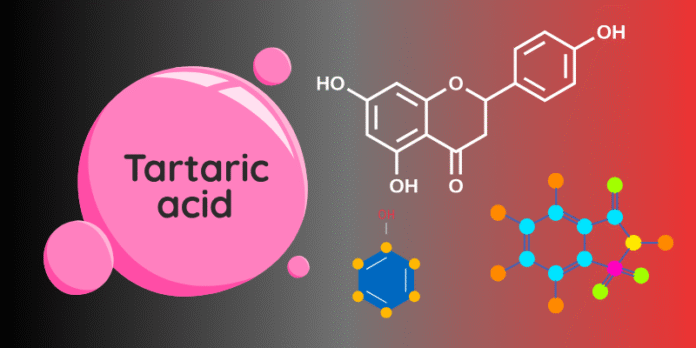Understanding Specific Rotation and Its Importance in Stereochemistry
Tartaric acid, a naturally occurring organic acid found in many plants, especially grapes, is a prime example of a chiral compound with significant optical activity. Its specific rotation of +12.0° is not just a numerical curiosity it reflects the molecular asymmetry that underpins its behavior in polarized light and its practical significance across industries like pharmaceuticals, food science, and analytical chemistry.
Specific rotation ([α]) is defined as the degree to which a chiral compound rotates the plane of polarized light under standardized conditions: concentration, path length, temperature, and wavelength (typically the sodium D-line at 589 nm). The formula is:
[α] = α / (l × c)
Where:
-
α = observed rotation in degrees
-
l = path length of the sample cell in decimeters (dm)
-
c = concentration of the solution in g/mL
Tartaric acid’s specific rotation of +12.0° means it rotates plane-polarized light clockwise under standard conditions, designating it as dextrorotatory.
Chemical Structure and Chirality of Tartaric Acid
Molecular Formula and Stereoisomers
Tartaric acid (C₄H₆O₆) has two chiral centers, giving rise to three stereoisomers:
-
L-(+)-Tartaric acid – Naturally occurring form with [α] = +12.0°
-
D-(–)-Tartaric acid – Enantiomer of the L form with [α] = –12.0°
-
Meso-tartaric acid – An achiral form due to internal plane symmetry, with [α] = 0°
The L-(+)-form, commonly referred to simply as tartaric acid, is the optically active species found in nature. The chirality of the molecule arises from the presence of two asymmetric carbon atoms bonded to hydroxyl (–OH) and carboxyl (–COOH) groups.
Natural Sources and Industrial Synthesis
Biological Origin
Tartaric acid is most abundantly found in:
-
Grapes and grape-derived products (especially wine lees)
-
Bananas, tamarinds, and apples
-
Fermented foods and balsamic vinegar
The acid is traditionally isolated from wine production by-products through precipitation with calcium salts, followed by purification.
Synthetic Pathways
Industrially, tartaric acid can also be synthesized using chemical methods from maleic anhydride or epoxysuccinic acid, though natural extraction remains preferable for food-grade and pharmaceutical applications due to its GRAS (Generally Recognized As Safe) status.
Analytical Applications: Measuring Optical Rotation
Polarimetry in Quality Control
The specific rotation value of +12.0° is a critical parameter in quality control to:
-
Confirm identity and purity of tartaric acid samples
-
Distinguish between enantiomers
-
Monitor racemization or contamination with meso-forms or other isomers
Using a polarimeter, samples are tested under tightly regulated conditions (usually 20°C, 1 dm path length, sodium D-line). Any deviation from +12.0° suggests possible impurity or mislabeling.
Optical Activity in Pharmaceutical and Food Industries
Chirality in Drug Formulation
Chirality matters in drug development: the biological activity of a molecule often depends on its spatial configuration. Tartaric acid, as a chiral resolving agent, is widely used in separating racemic mixtures into optically pure components.
Pharmaceutical uses include:
-
Synthesis of chiral intermediates
-
Salt formation with basic drug molecules for enhanced solubility
-
Controlled crystallization processes
Food Additive Functions
In the food industry, tartaric acid is used for:
-
Acidifying agent (E334) – imparts sharp taste to candies and soft drinks
-
Stabilizing emulsions and whipped products
-
Preventing sugar crystallization in confectionery
-
Antioxidant synergist with ascorbic acid
Its specific rotation ensures product labeling accuracy and compliance with international standards, particularly in food-grade tartaric acid.
Tartaric Acid in Enantiomeric Purity and Stereochemical Studies
Chiral Resolution
The ability of tartaric acid to form diastereomeric salts with racemic bases makes it a cornerstone in resolving racemates. These salts exhibit different solubilities, allowing physical separation of enantiomers through crystallization.
Optical Purity Determination
Optical rotation is directly linked to enantiomeric excess (ee):
%ee = (observed rotation / specific rotation of pure enantiomer) × 100
Thus, if a sample shows an observed rotation of +6.0°, then:
%ee = (+6.0° / +12.0°) × 100 = 50% ee
This provides a non-destructive, rapid method for determining purity in R&D and production.
Environmental and Biological Impact
Biodegradability
Tartaric acid is non-toxic and biodegradable, making it environmentally safe for use in:
-
Cleaning agents
-
Agricultural sprays
-
Eco-friendly descaling agents
Biological Significance
In the human body, tartaric acid plays a minor metabolic role, but excessive consumption may lead to:
-
Gastrointestinal discomfort
-
Potential electrolyte imbalance
However, its LD50 (lethal dose) is relatively high, indicating low toxicity in practical applications.
Recent Advances in Tartaric Acid Research
Stereoselective Synthesis
Modern organic chemistry continues to explore tartaric acid-derived auxiliaries in enantioselective synthesis. These derivatives guide stereoselective transformations, enhancing yield and selectivity in complex molecule construction.
Nanotechnology and Materials Science
Emerging studies have employed tartaric acid as:
-
A template molecule in synthesizing chiral nanostructures
-
A ligand in coordination chemistry
-
A component in biodegradable polymers
These applications show promising directions for green chemistry and sustainable material development.
Storage, Stability, and Handling
Tartaric acid is stable under dry conditions and should be:
-
Stored in air-tight containers
-
Kept in a cool, dry place
-
Protected from moisture and direct sunlight
It is compatible with most inorganic salts, but caution is advised when mixing with strong oxidizers or reducing agents.
Conclusion: Why the Specific Rotation of +12.0° Matters
The specific rotation of +12.0° is more than a physical property it is a benchmark for purity, identity, and optical behavior in both scientific and industrial contexts. Whether for pharmaceutical resolution, food formulation, or chiral analysis, this precise rotation value provides a critical reference point. Tartaric acid’s continued relevance in modern chemistry underlines its importance not just as a compound, but as a cornerstone of stereochemistry and chiral science.


